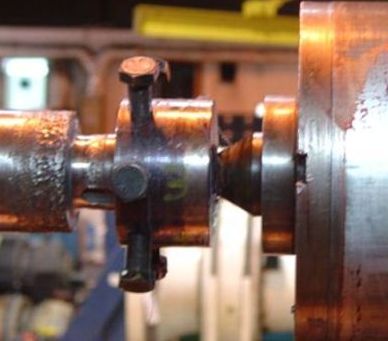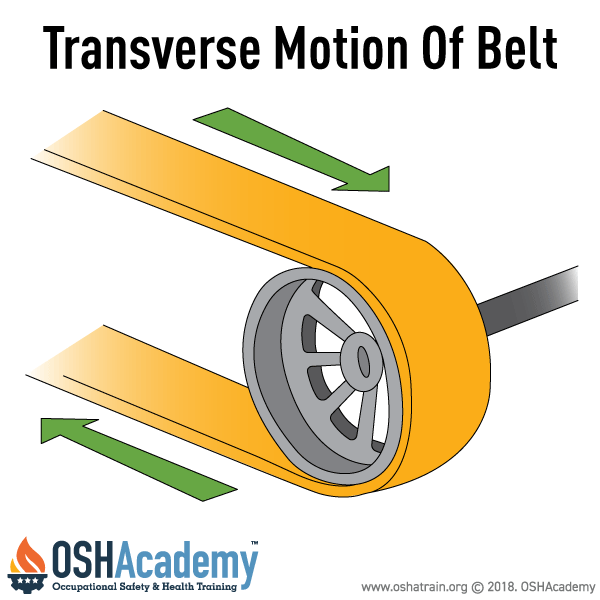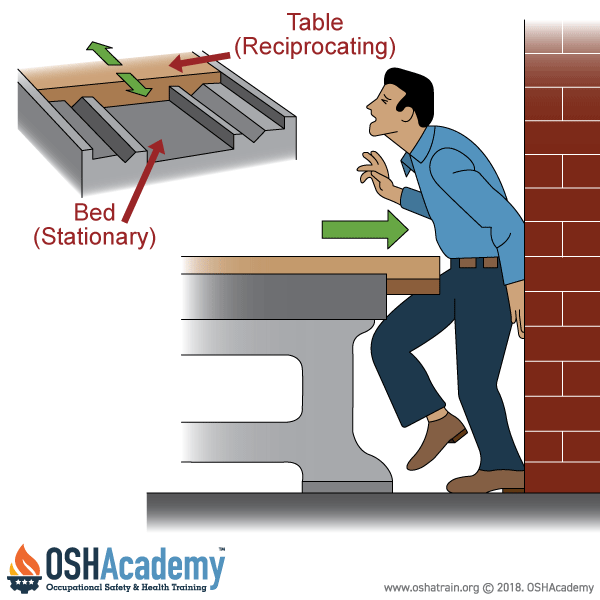Motions
Reciprocating Motions
Reciprocating motions are back-and-forth or up-and-down motions that may strike or entrap an employee between a moving part and a fixed object. Reciprocating motions may be hazardous because, during the back-and-forth or up-and-down motion, a worker may be struck by or caught between a moving and a stationary part.
Transverse Motions
A transverse motion occurs in a straight, continuous line that may strike or catch an employee in a pinch or shear point created by the moving part and a fixed object. Transverse motion (movement in a straight, continuous line) creates a hazard because a worker may be struck or caught in a pinch or shear point by the moving part.
Rotating Shafts
Warning: Exposure to rotating shafts is the most dangerous machine safeguarding hazard. It is so dangerous we wanted to mention it again before moving on to other topics. There have been numerous accidents due to exposure to rotating shafts and, unfortunately, most of these accidents result in a fatality.
The danger of exposure to rotating shafts increases when projections such as set screws, bolts, nicks, abrasions, and projecting keys or set screws are exposed on rotating parts (see image to right). The image below on the right shows what can happen when a worker gets caught on a rotating shaft. In this case, massive internal injuries resulted in a tragic fatality. You should consider exposure to rotating parts as an "imminent danger" situation that must be corrected immediately.
Knowledge Check Choose the best answer for the question.
1-4. Which of the following motions is the most dangerous and usually results in a fatality if an employee contacts it?
You forgot to answer the question!




